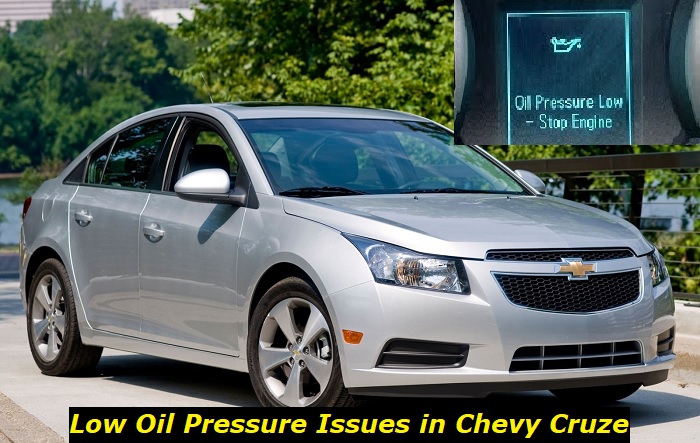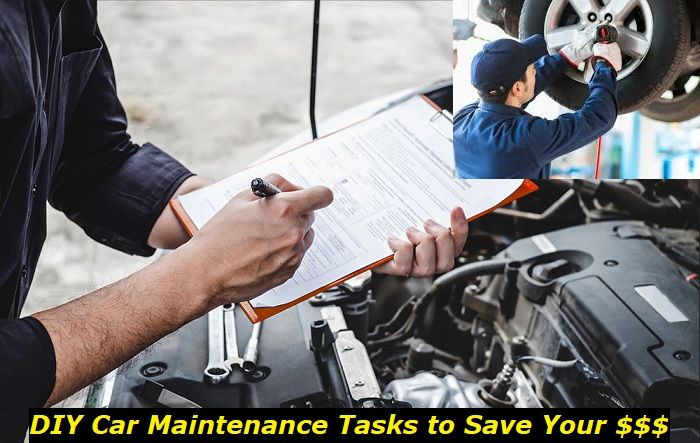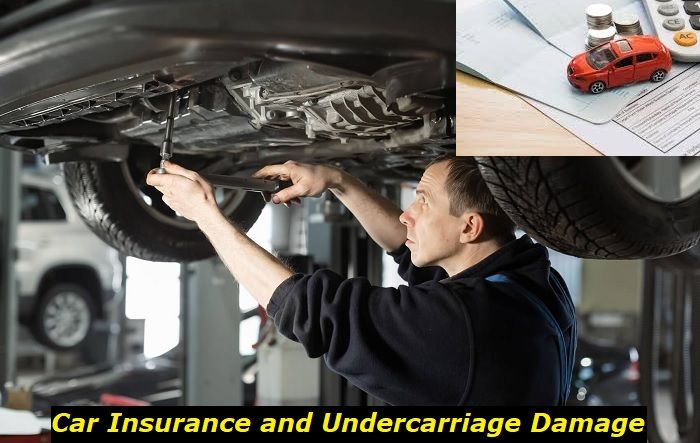The Chevrolet Cruze known for its comfortable ride, decent cabin space, and fuel-efficient engine has generated a significant fan base since its first introduction.
Oil-related issues highlights
- Level of urgency:high
- Average mileage:not related to mileage
- Repair cost:$0 - $1,900
- DIY repair:possible, in some cases
- Commonreasons:wrong oil, heavy oil consumption, leaks, engine problems
- Ifignored:fatal engine damage
- How to solve:use proper oil, check level regularly, solve issues withleaks

What should be the oil pressure in your Cruze and how to check it?
The healthy oil pressure for the 1.4 Turbo engine is 22 PSI at idle and over 50 PSI when revving higher than 3000 RPM.
The 1.8L non-turbo engine will have about 45-50 PSI when idling and this will go up to 80-90 PSI when revving up.
You may check the pressure easily. For this, you will need to buy the oil pressure gauge (or get it from a friend for some time). Then locate the oil pressure switch, take it off, and install the pressure gauge instead. Run the engine and see the pressure at different stages.
You will want to check it when cold, when warm, when idling, and when revving.
If you see the proper readings, then the oil pressure switch is the one to blame. Just replace it with the new one and then reset the ECU to get rid of the code and the error message. Resetting is possible by disconnecting the battery or using your OBD2 scanner.
Low Oil level or Issues with Oil Viscosity
Since your Cruze has certainly an oil level sensor, you might get a check engine light or the notorious oil lamp on your cluster. This is a very basic reason, commonly a fault of owners that don't do regular repair & maintenance. If the engine has a low oil level it would lead to oil starvation and hence low oil pressure.
Also, if the oil viscosity is not appropriate that could be a problem.
Low viscosity oil generates less resistance to flow through the system, hence translated as a lower pressure by the pressure sensor.
Also, high-viscosity oil required more effort to be pumped, leading to a lack of proper lubrication and hence lower oil pressure.
The issue of oil viscosity can also come up due to oil degradation or if your oil is diluted with gas. For example: The Chevy Cruze having 1.4 turbocharged engines can have oil leakages or oil being too hot can cause oil degradation.
How to Fix it:
Simply put the recommended engine oil and check for any oil leakages in the engine. Usually, the Chevy Cruze valve covers have this problem of oil leakage if not tightened to spec. The recommended oil viscosity and quantity are available here.
Worn Oil Pump or Clogged Oil Filter
Another reason could be a worn oil pump, this affects the ability of the oil to circulate resulting in low oil pressure.
As the demand for lubrication at cold start and idle is high, you would get an Oil warning light.
The indication of an oil pump malfunction is that the engine would give a rattling noise, due to oil not reaching properly the valvetrain.
How to Fix it:
Check the oil filter if it's lubricated or dry.
Since, the Chevy Cruze oil filter has a design problem, as the plastic tabs are prone to break and drop in the oil filter housing. There is a bulletin for this - check it here.
This debris causes the oil check valve to remain stuck open causing low oil pressure. For the Chevy Cruze, the oil pressure should be around 22 PSI when idling and 55-95 PSI when running at 3000-3500 RPM.
Please note that the engine is warmed up and the oil temperature is in the 80-100 range.
For testing use a manual oil pressure gauge to check oil pressure and check the operation of the oil drain valve, right underneath the engine oil cooler.
Then, if everything is working properly proceed to repair or replace the oil pump.
Faulty Oil Pressure Sensor
The oil pressure switch or oil pressure sensor, usually placed right behind the AC compressor on a Cruze Ecotec engine is used for checking anomalies in the oil pressure in the engine.
If this sensor is malfunctioning it can provide an inaccurate reading leading to a false low oil pressure signal.
How to Fix it:
A quick way to test the oil pressure sensor is to disconnect the wire from the sensor and ground the wire to the engine block.
A continuity check using a multimeter can be carried out, if there is no continuity, the sensor may be faulty and require a replacement.
Engine idling problem
Problems with the idle control system can also cause low oil pressure at idle.
The Chevy Cruze uses a variable displacement oil pump that varies the volume of oil according to engine rpm.
This technology was introduced in the 2011 model, in order to reduce the amount of load on the engine, increasing fuel economy.
Most people have reported the warning turned off at higher RPMs than the idle range. Therefore, the low oil pressure problem is less connected with the idle control but it's better to take this into account.
How to Fix it:
Calibrate your vehicle's idle control system by a qualified mechanic. This may involve adjusting the idle speed or addressing any issue with the idle air control valve (IAC).
Engine Wear and Tear
As your vehicle accumulates mileage, the engine components can experience wear and tear due to a lack of timely maintenance.
Bad engine oil, improper sealing of gaskets, cracked water, or oil passages could lead to increased clearance in between moving parts.
As a result, your Chevy Cruze would reduce its engine performance, exhibit starting issues, and hence contribute to lower oil pressure.
How to Fix it:
Regular maintenance and timely repairs are key for avoiding the low oil pressure problem.
Check all hose pipes (Oil, Water, Vacuum lines) and ensure proper sealing of components.
Also, check whether the PCV valve is working properly so that the engine oil may not be leaked to various engine components.
Conclusion
So, if you're having a hard time resolving problems of low oil pressure in your Chevy Cruze. Consider the following key points in the sequence shown below:
- Check Engine oil quantity and viscosity
- Physically check for any leakages of oil
- Troubleshoot the oil pressure sensor
- Open the oil filter and check for any debris and blockage
- If all above are okay, then proceed to check your oil pump
Hopefully, after reading this article you've learned well about the underlying issues when you get the "low oil pressure warning" on the cluster.
Please feel free to comment and share this if you found this useful!
About the authors
The CarAraC research team is composed of seasoned auto mechanics and automotive industry professionals, including individuals with advanced degrees and certifications in their field. Our team members boast prestigious credentials, reflecting their extensive knowledge and skills. These qualifications include: IMI: Institute of the Motor Industry, ASE-Certified Master Automobile Technicians; Coventry University, Graduate of MA in Automotive Journalism; Politecnico di Torino, Italy, MS Automotive Engineering; Ss. Cyril and Methodius University in Skopje, Mechanical University in Skopje; TOC Automotive College; DHA Suffa University, Department of Mechanical Engineering






Add comment